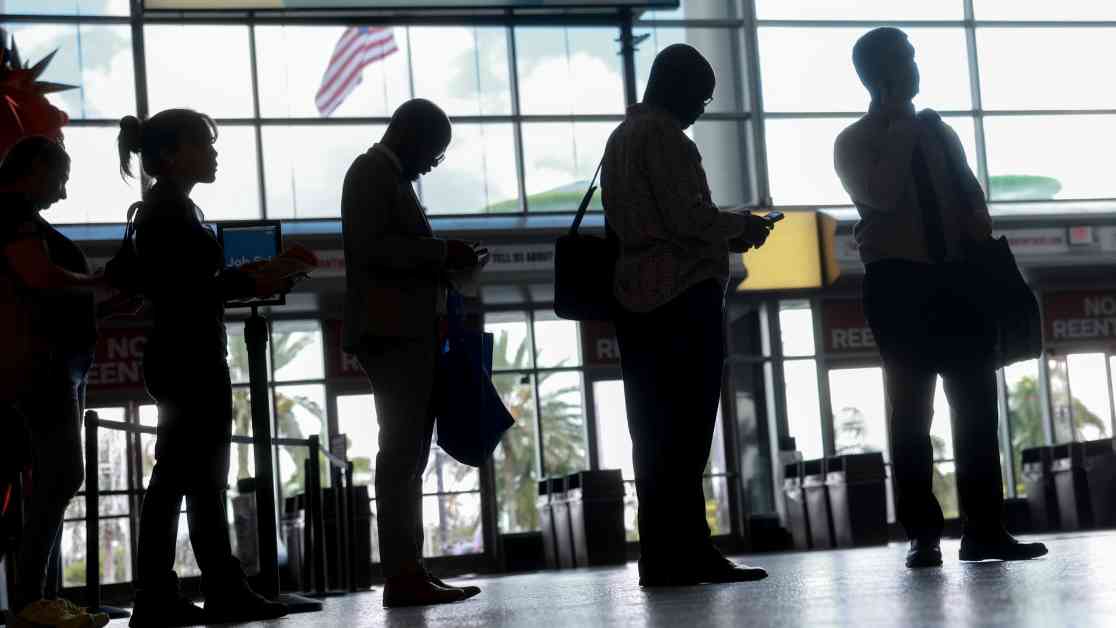Record High Layoffs and Historic Low Hiring Numbers in 2024: Challenger Report
In a recent report released by outplacement firm Challenger, Gray & Christmas, it was revealed that layoffs in August reached their highest total in 15 years, while year-to-date hiring hit a historic low. The data paints a concerning picture of the current state of the labor market, with companies facing economic uncertainty and making tough decisions about workforce management.
According to the report, announced job cuts in August totaled 75,891, a staggering 193% increase from July. While this number was only 1% higher than the same month in 2023, it marked the highest number of layoffs for August since 2009, during the aftermath of the global financial crisis. On the hiring front, companies reported adding just 6,101 new workers in August, a decrease of more than 21% from the previous year. The year-to-date hiring announcements of nearly 80,000 represent the lowest total in history since 2005.
Andrew Challenger, the senior vice president of Challenger, Gray & Christmas, commented on the findings, stating, “August’s surge in job cuts reflects growing economic uncertainty and shifting market dynamics. Companies are facing a variety of pressures, from rising operational costs to concerns about a potential economic slowdown, leading them to make tough decisions about workforce management.”
The report’s release comes at a time when concerns are mounting about the weakening labor market, despite the overall growth of 1.4 million nonfarm payrolls in the U.S. this year. Many market analysts anticipate that the softening jobs picture will prompt the Federal Reserve to lower interest rates later this month, even as inflation continues to exceed the central bank’s 2% target.
Key Trends in Layoffs and Hiring
One of the notable trends highlighted in the Challenger report is the significant growth in planned layoffs in the technology sector, with companies announcing 41,829 cuts, the highest number in 20 months. This surge in tech layoffs underscores the challenges faced by companies in a rapidly evolving industry that is constantly adapting to technological advancements and market changes.
Companies that announced job cuts most frequently cited cost-cutting measures and economic conditions as the primary reasons for their decisions. Interestingly, artificial intelligence was also listed as a factor for the first time since April, reflecting the increasing impact of automation and technology on workforce dynamics.
While the Challenger layoffs data may seem alarming, it is important to note that government reports on initial claims for unemployment benefits have shown only a slight increase in recent weeks, indicating that the overall labor market situation is more nuanced than the numbers may suggest.
The Impact of Economic Uncertainty on the Labor Market
The current surge in layoffs and historic low in hiring numbers can be attributed to a combination of factors, including economic uncertainty, rising operational costs, and concerns about a potential economic slowdown. Companies are grappling with tough decisions about workforce management as they navigate a volatile market environment.
The shift towards automation and artificial intelligence is also playing a significant role in shaping the labor market landscape. As companies adopt more advanced technologies to streamline operations and increase efficiency, traditional job roles are being reevaluated and, in some cases, replaced by automated systems.
The technology sector, in particular, is experiencing rapid changes that are leading to workforce restructuring and layoffs. Companies are under pressure to stay competitive in a fast-paced industry where innovation and agility are key drivers of success. As a result, job cuts in tech companies have surged to record levels, signaling a challenging period for employees in this sector.
Implications for the Federal Reserve and Interest Rates
The weakening labor market and the record high number of layoffs have raised concerns among policymakers and market analysts about the overall health of the economy. The Federal Reserve is closely monitoring these developments and is expected to take action to stimulate economic growth and stabilize the labor market.
Many experts anticipate that the Federal Reserve will lower interest rates in response to the softening jobs picture, in an effort to boost consumer spending, investment, and overall economic activity. Lowering interest rates can make borrowing cheaper for businesses and individuals, encouraging spending and investment in the economy.
The decision to lower interest rates comes at a time when inflation is running higher than the Federal Reserve’s target of 2%. While high inflation can erode purchasing power and reduce the value of savings, lowering interest rates can help stimulate economic growth and mitigate the impact of rising prices on consumers and businesses.
In conclusion, the Challenger report’s findings paint a sobering picture of the current state of the labor market, with record high layoffs and historic low hiring numbers highlighting the challenges faced by companies in a rapidly evolving economic landscape. As companies navigate economic uncertainty and shifting market dynamics, the need for strategic workforce management and adaptation to technological changes has never been more crucial.






















